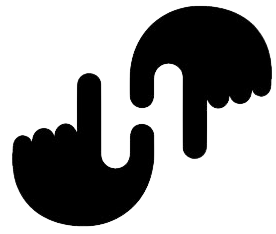What does the area under the curve tell us?
A common use of the term “area under the curve” (AUC) is found in pharmacokinetic literature. It represents the area under the plasma concentration curve, also called the plasma concentration-time profile. The AUC is a measure of total systemic exposure to the drug.
How do you calculate the total area under a curve?
The formula for the total area under the curve is A = limx→∞∑ni=1f(x).
How is area under the curve useful?
The AUC (from zero to infinity) represents the total drug exposure across time. AUC is a useful metric when trying to determine whether two formulations of the same dose (for example a capsule and a tablet) result in equal amounts of tissue or plasma exposure.
Is the area under a normal curve always 1?
The normal distribution is a continuous probability distribution. This has several implications for probability. The total area under the normal curve is equal to 1. The probability that a normal random variable X equals any particular value is 0.
Can the area under a curve be negative?
The Area Under a Curve Areas under the x-axis will come out negative and areas above the x-axis will be positive. This means that you have to be careful when finding an area which is partly above and partly below the x-axis.
Why is the area under the curve equal to 1?
The total area under the curve must equal 1. Every point on the curve must have a vertical height that is 0 or greater. (That is, the curve cannot fall below the x-axis.) Because the total area under the density curve is equal to 1, there is a correspondence between area and probability.
Is the area under a Gaussian always 1?
The total area under the normal curve is equal to 1. The probability that a normal random variable X equals any particular value is 0.
Why is the area under the curve the Antiderivative?
The area under the function (the integral) is given by the antiderivative! That is to say, if your function has a kink in it (the way |x| has a kink at zero, for example) then you can’t find a derivative at that kink, but integrals don’t have that problem.
Is area between curves always positive?
Finally, unlike the area under a curve that we looked at in the previous chapter the area between two curves will always be positive.
Does the area under the normal curve equal 1?
In statistical language, this distribution can be described as N(0,1), which indicates distribution is normal (N) and has a mean of 0 and a standard deviation of 1. Area under a normal curve. The total area under the curve is equal to 1.00 or unity.
What is the area underneath a normal curve always equal to?
The Normal (or Gaussian) distribution is the most common continuous probability distribution. The function gives the probability that an event will fall between any two real number limits as the curve approaches zero on either side of the mean. Area underneath the normal curve is always equal to 1.
Why the area under the normal curve is 1?
The area above the x -axis and under the curve must equal one, with the area under the curve representing the probability. Since the standard deviation is 1, this represents the probability that a normal distribution is between 2 standard deviations away from the mean.
How do you calculate area under the curve?
The Area Under a Curve The area under a curve between two points can be found by doing a definite integral between the two points. To find the area under the curve y = f (x) between x = a and x = b, integrate y = f (x) between the limits of a and b. Areas under the x-axis will come out negative and areas above the x-axis will be positive.
What is the the formula for area under a curve?
Area Under the Curve Formula The area under a curve between two points is found out by doing a definite integral between the two points. To find the area under the curve y = f (x) between x = a & x = b, integrate y = f (x) between the limits of a and b. This area can be calculated using integration with given limits.
What is the need of calculating area under the curve?
Calculating the area under the curve can be useful for any statistical purposes for any science, including electronics. The Area Under the Curve Between Z scores calculates the area under the curve between the 2 z-scores entered in.
What does area under curve stand for?
Area under the curve (pharmacokinetics) In the field of pharmacokinetics, the area under the curve ( AUC ) is the definite integral in a plot of drug concentration in blood plasma vs. time. In practice, the drug concentration is measured at certain discrete points in time and the trapezoidal rule is used to estimate AUC.
